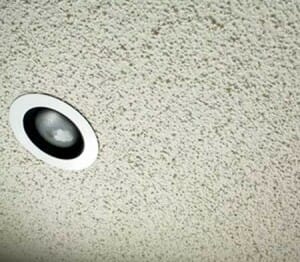
Starting your shutter painting project with thorough preparation is crucial. Before diving into the transformation, ensure your shutters are clean and free of any dirt, debris, or flaking paint. This might involve a gentle wash or a more vigorous scrub for tougher grime.
Once clean, lay down a drop cloth to protect your home’s exterior and surrounding area from drips or spills. This foundational step not only safeguards your property but also sets the stage for a smoother painting process.
The success of painting shutters hinges on the paint and tools you select. For shutters, latex paint is often recommended due to its flexibility and durability against the elements. This type of paint adapts well to temperature changes and provides long-lasting coverage. Pairing your paint with the right tools is just as important.
A quality paint scraper is indispensable for removing any old, peeling paint, while high-quality brushes ensure even application and coverage. Investing in the right materials from the start can significantly affect the finish and longevity of your paint job.
Priming your shutters is a step you shouldn’t skip, particularly when dealing with non-wood materials like plastic shutters. A coat of primer serves as an essential base, enhancing paint adhesion and ensuring a uniform appearance.
This is especially critical for shutters as they face direct exposure to the elements. Opting for a primer suited to your shutter material and the paint you’ll be using can make a considerable difference in the appearance and durability of your project.

When it comes to painting shutters, the key is in the technique. Begin by applying a thin, even coat of paint, ensuring you cover all surfaces without saturating them. It’s vital to let each coat of paint fully dry before adding another, to prevent drips and ensure the longevity of your work.
Patience here is crucial; rushing through the drying process can result in a finish that’s less than desirable and may require more work in the long run.
Different shutter materials require unique approaches. For example, painting vinyl shutters demands a specific type of paint that adheres well to plastic surfaces, often requiring a bonding primer as a first step.
On the other hand, wood shutters might absorb more paint, making sanding and priming essential to achieve a smooth finish. Understanding the specific needs of your shutter material can drastically improve the outcome of your exterior painting project.
Common pitfalls in shutter painting include neglecting thorough preparation, rushing drying times, and applying paint too thickly. Another frequent mistake is ignoring the weather; painting shutters in high humidity or direct sunlight can affect how paint dries and adheres.
By being mindful of these common errors and approaching the project with care and attention to detail, you can ensure a smoother painting process and a more professional-looking finish. Taking the time to properly prepare your shutters and following best practices for painting will result in a longer-lasting and more attractive appearance.

Before you begin painting, it’s crucial to prepare your shutters properly. This includes thoroughly cleaning them with a mixture of water and mild detergent, using a gentle scrub brush or sponge. Rinse the shutters thoroughly and allow them to dry completely before moving on to the next step.
Once your shutters are clean and dry, sanding is essential for creating a smooth surface for the paint to adhere to. Use fine-grit sandpaper and lightly sand the entire surface of each shutter. Be sure to remove any rough spots or peeling paint, as these can
Final touches can significantly impact the overall appearance of your painted shutters. After the last coat of paint has fully dried, conduct a thorough inspection for any uneven areas, drips, or spots that might have been missed.
Utilizing a small brush for touch-ups can address these issues, ensuring a flawless finish. This attention to detail ensures that your home improvement efforts result in shutters that look professionally painted, enhancing the beauty and appeal of your home’s exterior.
Maintaining your newly painted shutters is essential for preserving their appearance and extending their lifespan. Regularly cleaning the shutters with a soft cloth and mild soapy water can prevent dust and grime accumulation, keeping them looking fresh.
Additionally, inspecting your shutters annually for signs of wear or damage and addressing these promptly can prevent the need for extensive repairs. By caring for your shutters properly, you can delay the need for a repaint, ensuring they continue to contribute to your home’s curb appeal for years to come.

Freshly painted shutters can significantly enhance the curb appeal of your home, making it stand out in the neighborhood. Beyond the aesthetic improvement, painted shutters can also reflect the homeowner’s style and attention to detail, contributing to a well-maintained and inviting exterior.
Whether you’re looking to sell your home or simply wish to upgrade its appearance, investing in painting your shutters can be a cost-effective way to boost its visual appeal and overall value.
Deciding between a DIY approach and hiring professionals for painting shutters involves several considerations. For DIY enthusiasts, painting shutters can be a fulfilling weekend project, potentially saving on labor costs.
However, it’s essential to assess your skill level, the time you can dedicate to the project, and whether you have the necessary equipment. On the flip side, professional painters bring expertise, efficiency, and high-quality results, albeit at a higher cost.
When quality, durability, and a professional finish are priorities, and if the project’s scale or the shutters’ condition presents significant challenges, the expertise of a professional painting company might be worth the investment.
For homeowners aiming for perfection in their shutter painting project, partnering with a professional painting company like BCI offers numerous advantages. Professionals ensure meticulous preparation, application, and finishing touches that DIY efforts might not achieve. They can also advise on the best materials and techniques suited to your shutters’ specific needs.
By choosing BCI, you benefit from a team committed to transforming your home’s appearance with precision and care, ensuring your shutters look outstanding and stand the test of time.
Ready to give your shutters—and your home’s exterior—a fresh new look? Contact BCI for professional painting services that guarantee stunning results and enduring quality.